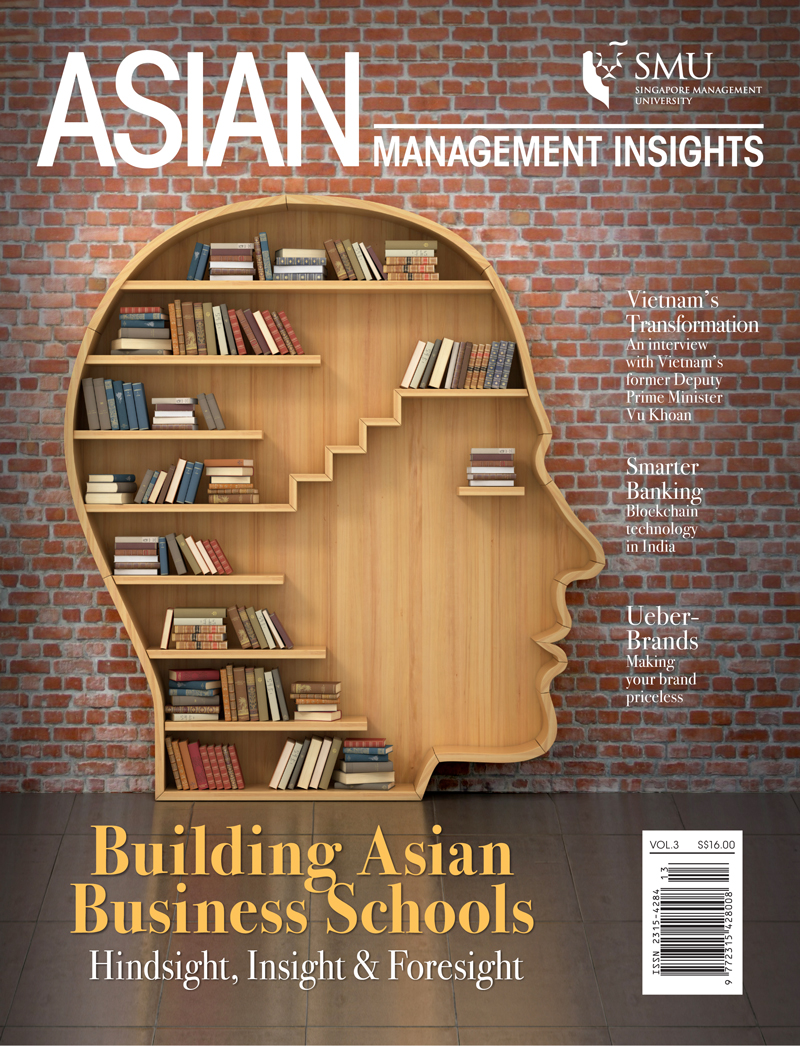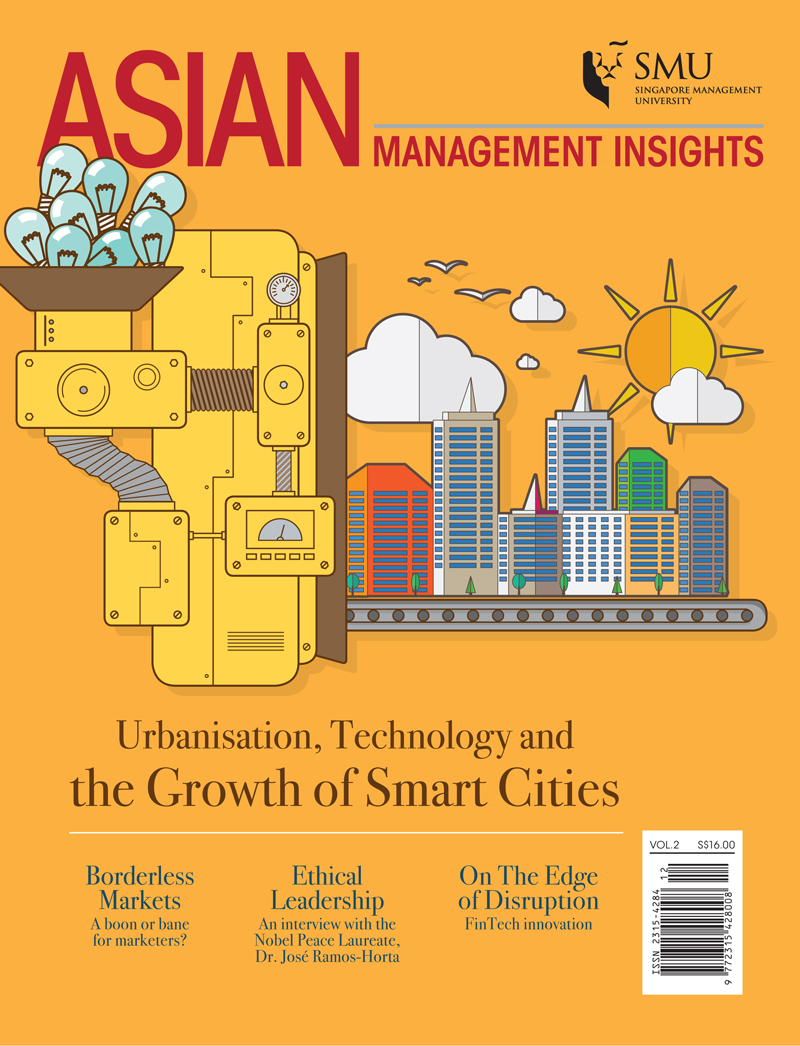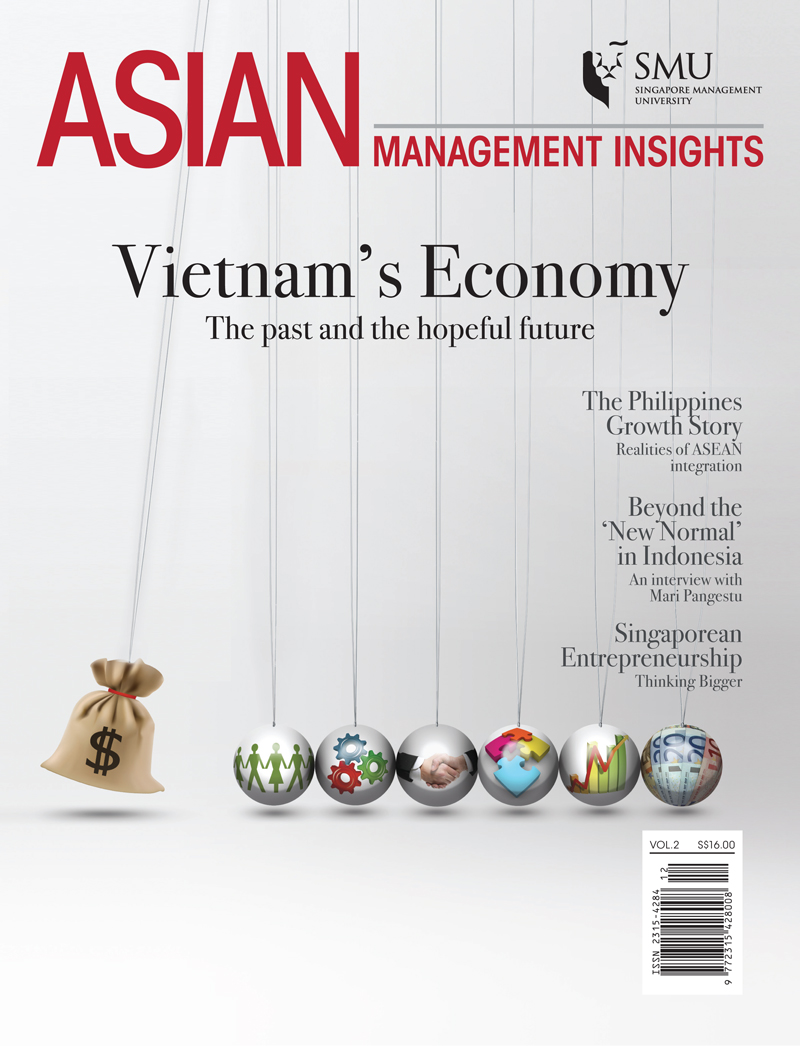
Volume 03 Issue 2 | Published on 09 Dec 2016
Building Asian Business Schools

Volume 03 Issue 1 | Published on 17 Nov 2016
National Branding
- The Rustling of Leaves [PDF | HTML]
Earlier this month I watched Scott Kelly and Mikhail Kornienko touch down after nearly a year in space, 340 days to be precise. During their stay they managed to tweet the most spectacular photos of the earth to their followers. Who would have thought it possible to document and share their experience in this way even a few years ago?

Volume 02 Issue 2 | Published on 17 Oct 2016
Urbanisation, Technology and the Growth of Smart Cities
- FROM SMART DRONES TO SMART LEADERSHIP: LESSONS IN INNOVATION [PDF | HTML]
The evolution of the word ‘innovation’ is an interesting one. It has gone from a description of any number of unique selling propositions for dishwashers and door locks to the whole change in mindset necessary for business (and life) in the 21st century.

Volume 02 Issue 1 | Published on 14 Sep 2016
Vietnam's Economy
- ON THE AEC, ECONOMIC MIRACLES AND LEADERSHIP [PDF | HTML]
On the AEC, economic miracles and leadership I was reading the tributes to the late Mr Lee Kuan Yew the other day, and came across this comment from Henry Kissinger, an astute strategist and a man of letters who at 91 is continuing to contribute to society through his writing.
- ASEAN’S ROLE IN ASIA PACIFIC: IN THE DRIVER’S SEAT OR JUST A BACK-SEAT DRIVER? [PDF | HTML]
The Association of Southeast Asian Nations (ASEAN) has often been described as the fulcrum around which the security, political and economic architecture of Asia-Pacific will be built. But can ASEAN play that role?

Volume 01 Issue 2 | Published on 31 Aug 2016
Leveraging Market-Based Assets
- PROTECTING AN ASIAN TREASURE IN AMERICA [PDF | HTML]
The impact of Japanese cars on the American auto industry is well known. Not so well known are the regulatory and intellectual property issues faced by beef producers in the introduction of Japan’s esteemed Wagyu beef herd to U.S. pastures and tables.

Volume 01 Issue 1 | Published on 29 Jul 2016
Unleashing Creativity
- UNLEASHING CREATIVITY ACROSS CULTURAL BORDERS [PDF | HTML]
As the global economy integrates and companies pursue opportunities outside their traditional borders, it is increasingly important to innovate across cultural borders. This article explains how individuals can improve cross-cultural creativity.